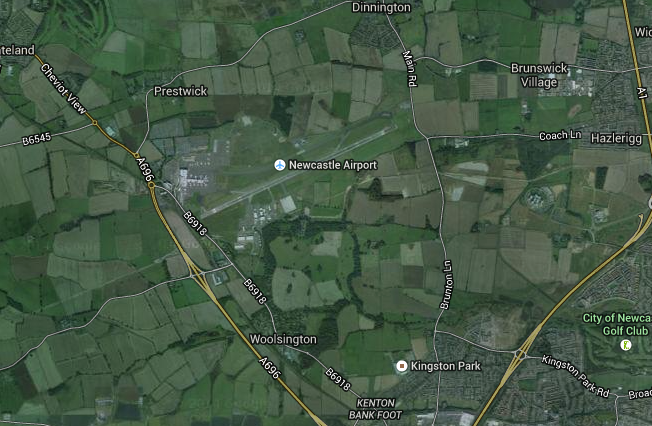
Updated on • 17 Aug 2024
Finding Somewhere To Fly
Now that the weather is improving I have enjoyed finding new places to fly. Here are a few tips I use to fly safe and find good filming locations. ... Read More
This blog post was submitted to us by Bruce Daniels, who is a local pilot and wrote about our DJI New Pilot Training earlier in the year: Now that the weather is starting to improve I have enjoyed be able to get out more often and start filming some nicer places with my DJI Phantom. The problem I am finding now is finding where to fly. When I am looking at trying to find somewhere to fly I always keep in mind the CAA laws and so I always keep some really basic rules and guidelines.
Never in a town or built up area.
Not within 50m of people or any structure.
Not within 2 miles of an Airport or runway approach.
Never on any land that isn’t either public access or somewhere I don’t have the landowner’s permission.
These are guidelines that I always use when I am looking for somewhere new to fly. Obviously most of these are laws set by the CAA but they’re just common sense. Why fly somewhere that I am either likely to get in trouble for or if anything was to happen and I had a mechanical malfunction with my quad that would lead to either me not being able to recover it, easy way to lose £1,000, or if I damaged something expensive, easy way to lose £1000+. These rules saved me on one occasion in particular. I was flying my quad around a football field. It was a little windy but the quad seemed to be fine, then all of a sudden there was a strong gust and the quad took off across the field. I was giving it full forward stick, and the quad was tilted forward, trying to return to the middle of the park. But the quad just kept getting closer and closer to the car park, particularly towards a nice new Mercedes 4x4. Thankfully I managed to drop the quad so it hit the deck and tumbled instead of flying full pelt into the car. Thankfully I only broke a few props and nothing else. It was primarily because I was flying around the middle of the park, a good 150m away from anything else, that meant I was able to prevent a very expensive repair bill. Now I take a lot more time in my flight planning before I go out. I use a number of different websites to decide where I want to go flying, normally I try to find something that I would like to film and start some research online. Screen-Shot-2015-04-27-at-16.35.55.png I start my search by using good old Google maps. Google maps is a great tool for finding somewhere to fly, the satellite imagery can show open areas and fields that are safe to fly. I especially like flying around football pitches for practice flights. You can also easily spot airports and runways. If you take your time and look for shadows you can even spot pylons, telephone masts and other tall features that may affect your flight. Screen-Shot-2015-04-27-at-16.35.27.png Screen-Shot-2015-04-27-at-16.34.03.png Next I check the weather, particularly wind speed. I usually use either the Met Office or the BBC weather websites or smart phone apps. It is important that you know the maximum speed that your quad can travel at. Obviously if the maximum speed of your quad is 15Mph, and you try flying into wind of 15Mph, then you’re not going to get anywhere, apart from using up your battery pack pretty quickly. I also note the direction. I have come quiet accustom to flying in Atti mode now and I like to know roughly which way my quad is going to drift in the wind. Screen-Shot-2015-04-27-at-16.37.45.png Also to note, that I started off practicing Atti mode when I knew that there was very light wind, less than 5Mph, and then built my way up. Finally when I get to where I wish to fly I start of by walking around the flight area first, I usually take a digital camera with me when I do this, just so I can play around with the aperture settings on my digital camera and then I know roughly what settings to use on my camera. Plus it’s always nice to get some pictures from the ground first. Whilst I am walking around the flight area I am usually looking out for any masts or pylons I hadn’t seen before, any low flying aircraft, checking the general wind strength and direction, any large groups of people who I don’t want to fly over, where people are they walking and where are the tracks. This walk around allows me to conduct a risk assessment of the whole area and should highlight any thing that I wish to avoid. Finally once I am happy with where I wish to fly, I then return to my car, get out my quadcopter, and then get her ready to fly.

written by
James Willoughby
James joined heliguy™ in 2018 following a 13-year stint in print and online journalism, having worked on regional and weekly newspaper titles. He is responsible for spearheading heliguy™'s content strategy and social media delivery. James collaborates with DJI Enterprise's European marketing team to coordinate and produce case studies and helps organise events and webinars.